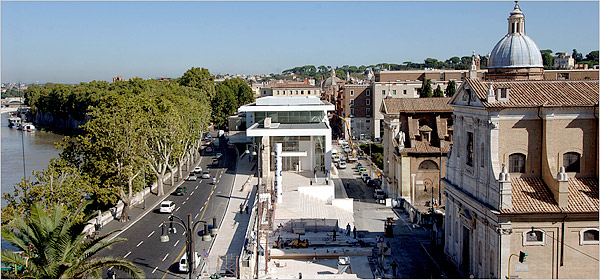Wanted in Rome is reporting the following:
Italian design wins Piazza Augusto Imperatore project.The city has presented the plans which have won the competition for the second phase of the long-term revamping of the Piazza Augusto Imperatore and its mausoleum...
According to these plans, there will be a large pedestrian area all round the mausoleum, with gardens which descend towards the entrance of the monument, and an eventual complete restoration of the monument itself. Estimated cost of the works is €20 million with a further two million for restoration of the monument itself. Tendering for the contracts will begin in the summer of 2007, and works should be finished by the end of 2008 or the beginning of 2009.
The ten projects from the competition will go on display at the Ara Pacis on November 30th.





Recent Comments